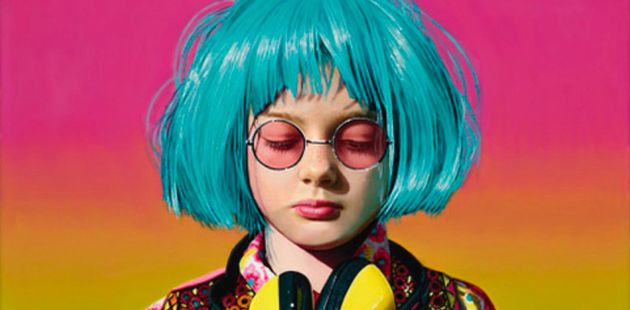 Revealing how artists are finding new content in digital media and how technology has altered the nature of analogue art practices, RMIT Gallery presents Analogue Art in a Digital World on display from 7 December 2018.
Revealing how artists are finding new content in digital media and how technology has altered the nature of analogue art practices, RMIT Gallery presents Analogue Art in a Digital World on display from 7 December 2018.
Curated by accomplished painters Sam Leach and Tony Lloyd, Analogue Art in a Digital World showcases works by 20 Australian artists to reveal how digital aesthetics are creeping into contemporary painting as well as artworks such as drawing, tapestry and knitting.
An Archibald and Wynne Landscape prize winner, Leach said the artists are consciously and unconsciously incorporating digital aesthetics into their artworks, such as screen-like smoothness, pixilation, high resolution clarity, and the depiction of glitches.
“The world has been transformed by digital technology and things look different since the internet,” said Leach. “The 54 artworks in this exhibition reflect that difference. The salient point is that paintings made now, and the artworks in this show, could not have been made without the digital.”
RMIT Gallery Acting Director Helen Rayment said the artists in the exhibition readily admitted to using digital tools in their defiantly analogue works of art. These include smartphones, tablets and software programs with many making preliminary sketches of works on computer. “Analogue Art in a Digital World celebrates the reinvigoration of art making and the new boundaries of representational genres,” she said.
Analogue Art in a Digital World presents a survey of contemporary artists who use the analogue practices of painting and drawing to create artworks that engage with or are influenced by digital visual culture. Digital photography, Photoshop, and Google images are standard tools for painters. The sketch book has been replaced by a desktop folder.
Artists on display include: Monika Behrens, Natasha Bieniek, Chris Bond, Andrew Browne, Magda Cebokli, Simon Finn, Juan Ford, Stephen Haley, Michelle Hamer, Kate Just, Sam Leach, Tony Lloyd, Amanda Marburg, Viv Miller, Jan Nelson, Becc Orszag, David Ralph, Datsun Tran, Darren Wardle, and Alice Wormald.
Co-curator Tony Lloyd, whose paintings are influenced by cinema, in particular Science Fiction, said that it is important to note that many of the artists in the exhibition also make digital art in parallel to their analogue practice.
“These artists construct sophisticated and intelligent images and they utilise technology astutely in the service and making of their art,” said Lloyd. “They are not apologists for traditional media, nor are they uncritical of the new digital order.”
The exhibition will reveal how artists are finding new content in digital media and how technology has altered the nature of analogue art practices. Language shapes the way we think and the dominant visual medium influences the way we see the world.
In addition to practical uses of technology, digital aesthetics have crept into analogue painting. The invention of photography had a profound impact on painting in the nineteenth century and now digital technology has reinvigorated analogue traditions of art making, pushing representational painting and drawing in fascinating new directions.
Analogue Art in a Digital World
RMIT Gallery – Storey Hall, 344 Swanston Street, Melbourne
Exhibition: 7 December 2018 – 19 January 2019
Free admission
For more information, visit: www.rmit.edu.au for details.
Image: Jan Nelson, Black River Running #10, 2018 (detail) oil on linen, 75 x 61 cm – courtesy of the artist and Anna Schwartz Gallery, Melbourne
